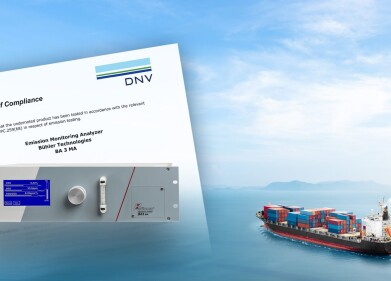-
 Image 2 - Comparison of values for NIST certified reference materials 1085-c and 1848
Image 2 - Comparison of values for NIST certified reference materials 1085-c and 1848 -
 Image 1 – Typical elements of interest to Asphalt producers
Image 1 – Typical elements of interest to Asphalt producers
Measurement and testing
Quantifying the amount of Metals in Asphalt Binders to comply with environmental regulations
Oct 18 2017
Introduction
The threat to safe drinking water is one of the greatest pollution problems in the world today. Less than 1% of the water on earth is clean and available for potable drinking water. Sources of human drinking water are a mixture of groundwater aquifers and surface water reservoirs. It is important for the safety of these waters that the sources be protected from pollutants. A significant source of pollution to drinking water supplies comes from the discharge of untreated or under treated storm water runoff. More importantly runoff from Asphalt roadways
Background
Bitumen and mineral filler materials in asphalt road surfaces contain different heavy metal species, including Cu, Zn, Cd, and Pb. Roadway runoff can include breakdown products from Asphalt emulsifiers since a significant metal concentration is found in the polar fraction of Asphalt Binders as measured on the Schieff scale. This is of concern to environmental protection agencies like the Federal Highway Administration and the state DOTs, trying to balance road longevity with safety concerns for road construction materials.
Economic factors lead Asphalt makers to look for alternative material sources and to use recycled materials to deal with the waste produced by aging road surfaces and used motor and vegetable oils are natural emulsifiers for recycled asphalt paving and are readily available at low cost.
Elemental composition ranges determined by research
It stands to reason that engine oil additives would also be present in the Asphalt from waste engine oil and one would expect to see concentrations of Zinc, Phosphorus, Calcium and potentially Molybdenum metals in these Asphalt samples as well.
Using XRF to quantify the metal content of asphalt binders
The use of bench top EDXRF to characterise binders before blending them into asphalt cements is possible because the metal values are in the 10s – 1000s of ppms and are readily monitored. The data in generated in this study was collected on a Xenemetrix X-Cite Benchtop using the Analytix software package which has both empirical and fundamental parameter processes for evaluating data.
Table 1 – Typical elements of interest to Asphalt producers (Please refer to image 1)
Validation Results on NIST Standards
Two NIST standards were used to validate the method
Table 2 - Comparison of values for NIST certified reference materials 1085-c and 1848 (Please refer to image 2)
Summary
The monitoring of metals in asphalt additives and ultimately in roadway runoff is able to be monitored using a very simple technique that is both robust and precise, if calibrated correctly, and the interelement effects are correctly assessed and compensated for. Multi element capability as well as very precise excitation conditions characterise EDXRF and make it the ideal instrument for routine laboratory measurements with higher end EDXRF systems having the capability to quantify the carbon content of solid asphalt aggregate compacted into a briquette under substantial hydraulic pressure
Conclusion
EDXRF is a very cost effective method for characterising the metal content in asphalt and asphalt related materials. Relatively simple sample preparation steps and sophisticated matrix correction methods can lead to highly accurate and precise results.
Digital Edition
PIN 26.1 Feb/Mar 2025
March 2025
Analytical Instrumentation - Elemental Analysis for Quality and Process Control at Refineries, for Lubricants and Wear Metals in Engine Oils - Synthetic Lubricants: New Developments - Scaling...
View all digital editions
Events
Apr 08 2025 Birmingham, UK
Apr 08 2025 Kielce, Poland
Apr 08 2025 Ravenna, Italy
Apr 08 2025 Southampton, UK
Apr 08 2025 London, UK




















